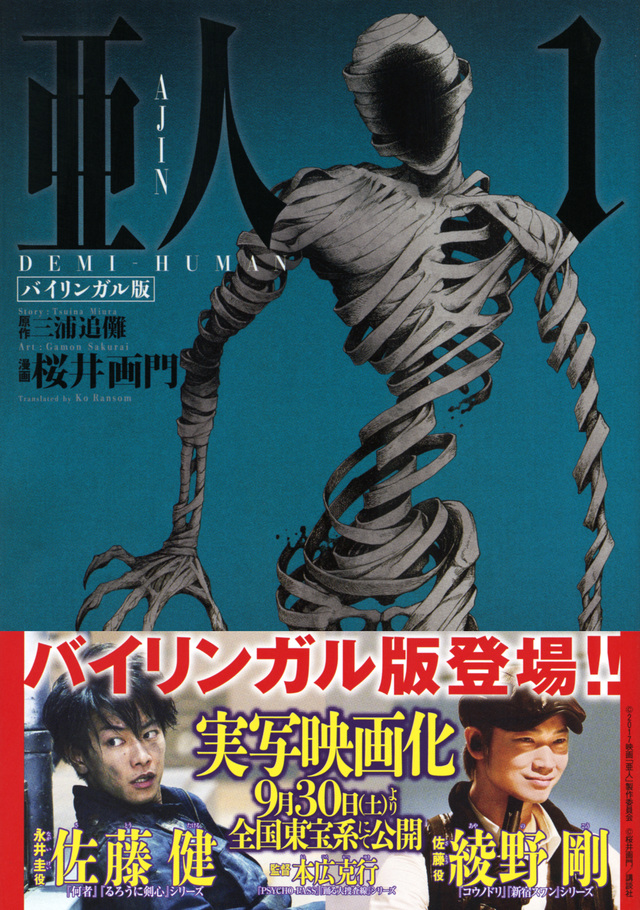(All rights belong to their owners. Images used for review purposes only.
Image taken from the Kodansha page.)
Ajin, Bilingual, vol. 1, translated by Kou Ransom
Kodansha Publishing has joined the other Japanese manga publishers that have bilingual manga for teaching children English. I've seen English/Japanese Doraemon volumes recently, and I discovered bilingual copies of Urusei Yatsura in the Maruzen bookstore in Kagoshima shortly after I got here, 6 years ago, and there have been others. Right now, though, we have Ajin, AKA - Demi-Human, with Ko Ransom listed in the translation credits. Ko's name doesn't show up anywhere else in an Amazon.jp search.
Before I start on this, I'd like to lay a little ground work. There's a professional translators association based in Tokyo, and they offer periodic workshops for members trying to get started in the industry. I took one of these workshops last Spring, and the main focus was on fine-tuning our translations (Japanese to English) to be natural-sounding, rather than literally accurate. The point being that clients want high-level translations without having to hire a separate native-checker to do rewrites and clean-up. I think a lot does depend on the client, because in the case of Japanese companies, there is a need for the translation to be relatively close to the original text to avoid the sense that the translator made a mistake. Regardless, the workshop taught that translations shouldn't feel like translations.
So, looking at the first few pages of Ajin, vol. 1, the very first thing that struck me was just how stiff and unnatural the English is. I won't quote the dialog here, or scan any of the pages, because I feel like I'm skating on thin ice in commenting on this kind of book, especially since Vertical (owned by Kodansha) has the U.S. rights to this title. Anyway, yes, the translation is pretty faithful to the original Japanese, so anyone trying to learn English is going to get a decent exposure to English vocabulary, but the sentence structure is very tortured. Working backwards, from English to Japanese, isn't very easy either, because the English text fills the word balloons (which haven't been re-laid out to allow for regular English sentence structures) and the original Japanese source text is crammed into the margins in a really small font, making it hard to read.
As an English teacher, I find it difficult to recommend these kinds of bilingual manga to students of either language, because of the above restrictions, and the 1,000 yen price tag ($10 USD with tax). That's well over 40% above the regular manga cover price. So, yeah, not recommended.





No comments:
Post a Comment